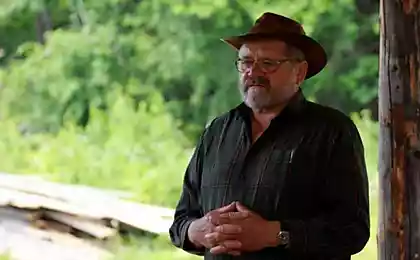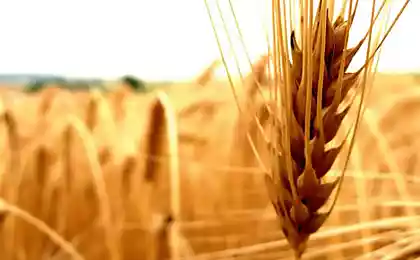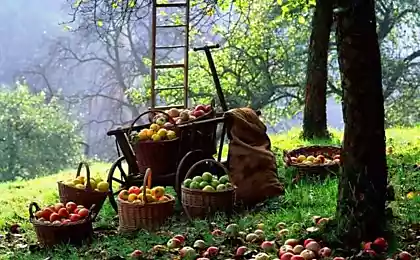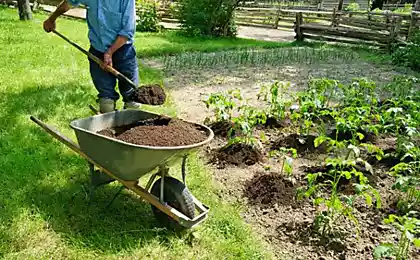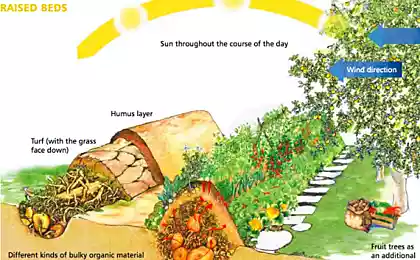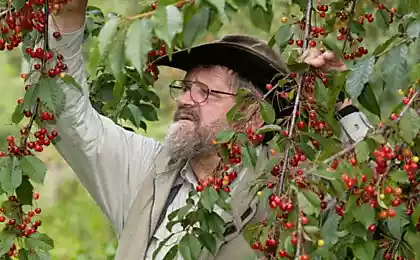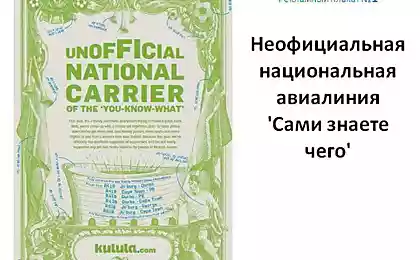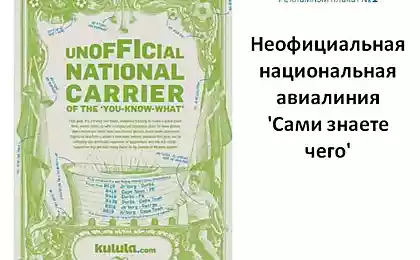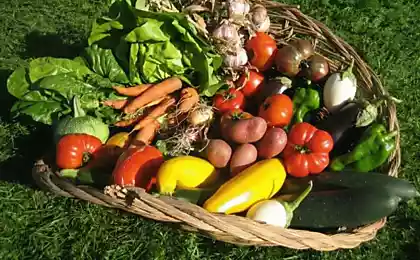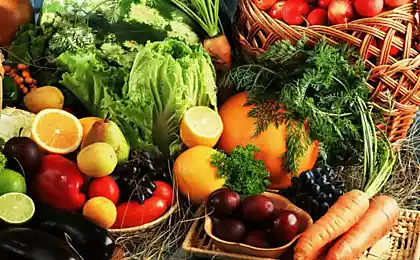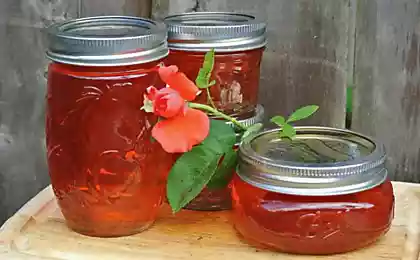506
Sepp Holzer — smart agriculture
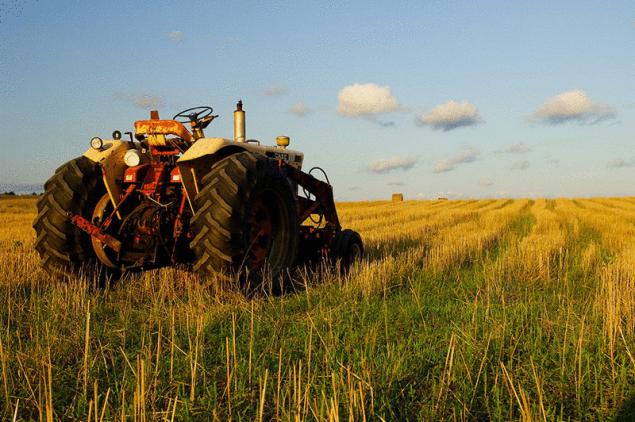
Sepp Holzer — a man of legend. He is the brightest representative of the agrarian direction, which is called "permaculture" — permanent, i.e., natural, agriculture. Today and say, not just permaculture, and permaculture Sepp Holzer.
The secret of Sepp Holzer's simple. He observes nature and tries to live according to its laws. A boy Sepp on his father's farm grew a variety of plants. Then he called in his garden all the friends and gladly shared with them. Much the same is happening today. But now to the Holzer come the guys from the school yard — go to him professionals-farmers from all over the world. Holzer's farm is in the mountains, at an altitude of 1300 meters above sea level. Even in July and August land, Holzer can bring snow, but he has a Mature plum, apricot, fine fruit, kiwi and grapes.
Three agrarian way
Today, when we speak about agriculture, usually referring to industrial and traditional direction. As you know, industrial agriculture for the rapid growth of plants using synthetic fertilizers, pesticides, genetically modified organisms, and heavy farm equipment. Due to this farmers get high yield and profit, but the chemicals are harmful to the environment and grown with their help vegetables and fruits are often tasteless.
Traditional or biologic type of agriculture is characterized by closeness to nature, a complete rejection of chemical means of protection and plant nutrition, the use of crop rotation. Its main advantage is the obtaining of healthy products, the disadvantage is the low productivity and high labor costs.
Permaculture offers a new type of agricultural business based on the inter-linkages in natural ecosystems. From traditional agriculture permaculture took the rejection of chemical fertilizers and industrial — large agricultural machinery.
Sepp Holzer calculates their costs, and, in his words, they are much more modest than in the industrial and traditional agriculture. "First, I have less work, which affects pay, he explains. — Secondly, I don't spend time growing plants — they help each other. Thirdly, the quality of my products is higher because I don't have to deal with weeds is all regulated by nature, and I try not to disturb".
The main difference between permaculture from industrial and traditional agriculture — the respect for all living beings. Trying to change the world, followers of permaculture always think about how their decision will affect other ecosystem participants.
The theory of mixed plantings
In modern agriculture decided to cultivate the fields for one species of cultural plants. Such monoculture crops, according to Holzer, it brings only harm: the plants grow and produce fruit at one time,
require the same nutrients, which makes them compete with each other. Holzer goes the other way, promoting mixed planting. He is sure that when different species of plants live side by side, between them there is a symbiosis. The members of different species require different nutrients, what's more, they feed each other — fertilize the soil with fallen leaves, dead roots.
Sepp Holzer talks about his estate in Austria. He and his parents grow corn. But along with them the Holzer fruit trees, shrubs, vegetables, flowers. "Many believe that grain monoculture, but it is not, he says. — In my area they get along perfectly with other plants. When I clean grain combine, then leave 10 inches of the stems to avoid damage while cleaning other plant — radishes, lettuce, carrots."
Holzer is sure: narrow specialization for the entrepreneur in the agricultural sector — too risky not only in biological but also in economic terms. In his youth he tried to find a specific niche to just do it. One of his Hobbies was the breeding of fungi — the Austrian produced, processed and even sold to other countries. But once the sale of the mushrooms fell sharply, and he nearly went bankrupt. According to Holzer, multilateralism, by contrast, builds confidence in today and tomorrow.
The changing landscape
Proper landscaping can give higher yields of cultivated plants is another postulate of the teachings about permaculture. Favorite elements of the landscape, Holzer — land of the ridge (high hilly or flat) and crater gardens. The feature of the other — in the form of: different plants are planted one above the other steps, thereby not only increasing the cultivated area, but also to create different zones of climate.
Land ridge occurs in the form of a mound height of approximately 1.5 meters. It is perfect for humid regions where much rain falls. it dries faster than on the plain. On the top floor of a well are growing light-loving plants, such as sunflowers. There are planted fruit trees, but not the tree, whose roots spread along the ground, and with deep roots, like the cherries, these trees will be planted below to protect plants from the wind. In the middle of the ridge planted any vegetables. And at its foot, where a lot of moisture, cucumbers, zucchini, pumpkins, watermelons.
The crater garden is built on the same principle as the land ridge, only it goes in depth. For a device of this garden is chosen the lowest place on the site where they can gather overhead and underground water. The crater garden, very convenient for arid places where you want extra moisture, increases in cultivated area, protects plants from wind, creates a heat trap and is ideal for moisture-loving vegetables. In winter, the plants in this garden, protected from wind and frost.
Castle water
Rehydration is a favorite subject of Sepp Holzer. Holzer against mechanized irrigation systems and explains that, although not everywhere in sufficient quantity and there are springs and groundwater, there are many ways to draw water for his land. The easiest way is to collect rainwater from the surface of the depressions to accumulate water and then direct it to water plants. Even better option — their own to create the reservoir where it will accumulate this water.
It is important to choose the location of the future reservoir. Each owner knows all the heights and hollows of the site, therefore, could easily determine where in the end will drain Sadkova water. If the site is located on the plain, Holzer advised to monitor the plants. For example, alder usually grows where there is underground water. So, with her and other moisture-loving plants you can make a pond.
An Austrian farmer is proposing to build reservoirs, eliminating from the process of construction film, concrete and other materials that are commonly used for moisture retention. "I don't want to violate the water cycle in nature, therefore, propose to fill a water tank in a natural way. In the future, this pond will not only promote plant growth — it will be possible to breed fish, crayfish, waterfowl," he explains.
In their ponds Holzer water retention exclusively using natural materials. "Water always seeks to find a loophole to infiltrate, so you should find this a narrow neck and seal it. To begin to free the pond from what passes water, sand, small stones. Then dig a ditch depth of two to three meters and cover to the bottom of the more dense material, tamp it with a shovel. If you make a good lock, the water will not drain and on the sides".
Intuition and self-organization
Holzer himself is ready to work on the bugs all the time: its main purpose — with the help of the laws of nature and principles of permaculture to correct past mistakes and prevent new natural disasters. This philosophy, of course, can not find the response from caring people, and learning about permaculture, many of them are beginning to follow the teachings.
Source: ecowars.tv/
